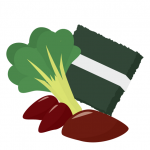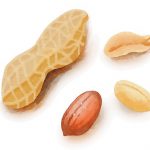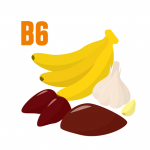Barley is becoming a staple in the diet as a rich source of dietary fiber, which plays an important role in gut health. There are many different types of barley, glutinous oats, and oatmeal , but here we will introduce the nutritional components of BARLEYmax®︎, which is considered to be rich in more than just dietary fiber.
Excellent nutritional ingredients other than dietary fiber
Barley is generally thought of as a source of dietary fiber, but BARLEYmax®︎ contains not only dietary fiber, but is also rich in iron and a variety of other ingredients.
By eating BARLEYmax®︎, you can get dietary fiber and many other ingredients at the same time. Here are some of the most important ingredients and their explanations.
Nutrient 1 contained in BARLEYmax®: iron
Iron is an essential component of hemoglobin, which carries oxygen throughout the body. When hemoglobin is depleted, the body’s ability to transport oxygen is reduced, leading to symptoms such as fatigue, headache, shortness of breath, and impaired motor function.
The body loses approximately 1 mg of iron per day for adult males and 0.8 mg for females through metabolism, and since the body cannot make iron, it must be supplied through diet. (*2)
BARLEYmax®︎ contains about 5 times more iron than ordinary barley (pressed grain). It also contains about twice as much Iron as komatsuna, which is generally considered to be high in iron.(*3)
How to prevent iron deficiency in an age of plenty
We have entered an age of plenty, a world where anything we want to eat is readily available. Fast food and family restaurants have become the norm. And cheap, quick and convenient foods such as instant foods are everywhere.
Nutrient 2 contained in BARLEYmax®: magnesium
Magnesium is an essential mineral for the human body. It is believed to play a role in activating over 300 types of enzymes, as well as assisting in muscle contraction, nerve impulse transmission, and the regulation of body temperature and blood pressure. Magnesium is a very important component, as a deficiency can not only affect bone formation, but can also cause arrhythmias, ischemic heart disease, hypertension, and muscle cramps. It is also a nutrient to be aware of, as its deficiency can also cause nervous sensitivity and depressive feelings.
BARLEYmax® contains about three times the amount of magnesium as regular barley (pressed grain) and about one-third of the magnesium found in cut wakame, which is known to be high in magnesium. (Cut wakame is based on Food Standard Composition Table in Japan, 2015 Edition (7th Revision).
Various ailments caused by zinc deficiency
Zinc is an important nutrient that plays many roles in health. However, it is a nutrient that has been found to be deficient in both men and women of all ages, and many dietary supplements are available to supplement zinc.
Nutrient 3 contained in BARLEYmax®: vitamins
Vitamins are organic compounds that are necessary for the normal functioning of the human body, although in smaller amounts than energy-producing nutrients. Since they hardly be synthesized by the body, they must be obtained from food (*4).
Based on their properties, vitamins can be divided into water-soluble and fat-soluble vitamins. And, BARLEYmax®︎ contains vitamin B1, vitamin B6, niacin and biotin, which are water-soluble vitamins. Water-soluble vitamins supplement the function of enzymes necessary for various metabolic processes in the body.
The role of vitamin B6
Do you know what vitamin B are? vitamin B are considered essential for extracting energy from carbohydrates, fats, and proteins.
SUMMARY
Although BARLEYmax®︎ has attracted much attention for the amount and quality of its dietary fiber, it is an ingredient that can provide many nutrients on its own. Add BARLEYmax®︎ to your daily diet to replenish the nutrients you may be lacking.
Recipes using BARLEYmax®︎ and inulin
*1 Source of the table.
Dietary fiber and GABA of BARLEYmax®︎ were tested in one lot at Japan Food Research Laboratories.
Other nutrients in BARLEYmax®︎ are averages of 3 lots measured at Japan Food Research Laboratories
Other grains are from Food Standard Composition Table in Japan 2015 (7th Revision)
*2: Excerpt from the “Iron” information page of e-Health Net (Ministry of Health, Labour and Welfare)
Iron
*3: Food Standard Composition Table in Japan 2015 (7th Revision)
*4: Excerpt from the “Vitamins” information page of e-Health Net (Ministry of Health, Labour and Welfare)





